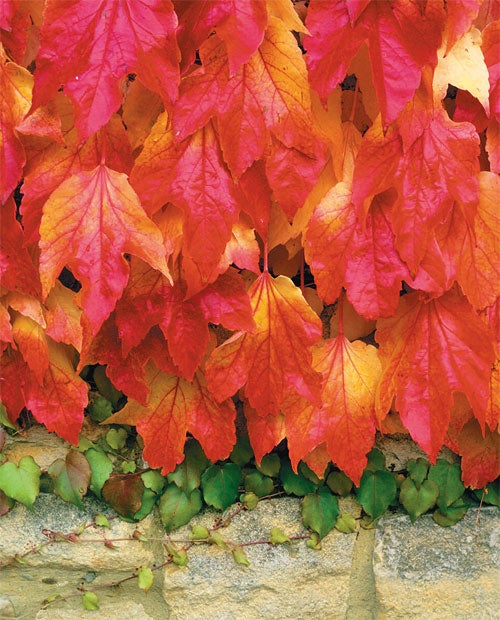Urban gardener, Cleve West: The ivy league

Some London-based clients are desperate to use climbing plants to cover excess bricks and mortar, the result of a new extension. The brickwork, sensitively executed using a mixture of tones, blends beautifully with older parts of the house, but the clients are still keen to green it up as quickly as possible.
Ivy was in the starting line-up for the back of one of these houses, where the north-facing wall is in complete shade. The other (deciduous) contestant was Virginia Creeper (Parthenocissus quinquefolia), or one of its relatives, Boston Ivy (P. tricuspidata), or P. henryana, which is probably top of my list at the moment as the white veins give a lighter touch before the stunning autumnal display.
These urban-garden stalwarts that thrive in shade occasionally get bad press, particularly when they are left to smother everything in sight and, while I've aired my enthusiasm for ivy and self-clinging climbers on a number of occasions, their use does warrant a little consideration, as there are both advantages and disadvantages to having plants affixing themselves directly to a house.
Self-clinging climbers, especially ivy, can shorten the life of a wall, but if the wall is well-built with good-quality materials and sound joints there is no reason why the plants and the wall shouldn't get along for generations. If there are loose bricks or crumbling joints, searching tendrils will almost certainly make the situation worse. Plants will also venture into airbricks, around drainpipes and behind fascia boards, potentially causing problems. Tendrils may discolour brickwork but this is only something to worry about if you let the plant get beyond the limits you've imposed and have to cut it back. It's always best to prevent the climber from getting to areas you don't want it to go (windows, cables, pipes, gutters and eaves), rather than trying to remove it after it has gained a foothold.
On a more positive note, assuming that the plant has been chosen for its aesthetic contribution, plants growing up walls can help keep wall temperatures down - so this could be a valuable plant for the future if global warming continues its pace. Leaves can also help shed rainwater, keep walls dry and provide a habitat for insects and birds (though some people don't see this as a positive thing).
If you already have ivy, or any other self-clinging climber, and are keen to get rid of it, you might end up with more work than you bargained for. Pulling an established climber from an old wall risks dislodging loose mortar and even bricks, leaving you with a difficult and expensive job re-pointing and cleaning. A small area should be removed first to help you see what damage might be done and whether you'll like the look of the exposed wall. On many occasions I've seen climbers taken down without much thought, only to leave a bleak eyesore that can often only be resolved by planting - you've guessed it - new climbers.
The best way to remove a climbing plant is to cut it away from the wall rather than pulling it off. If you can't reach certain areas you can cut a line through a comfortable height and leave it for a couple of weeks for the suckers to dry and loosen their grip. The vine can then be pulled down more easily. Marks left on brickwork can be scrubbed off with a stiff brush. Resist the temptation to use chemicals, as acids can stain the wall and even weaken mortared joints. If the dead suckers are left on too long they can oxidise and become even more difficult to remove.
Hydrangea petiolaris and Schizophragma hydrangeoides are also good climbers for shade, boasting beautiful flowers to boot. They can, however, take two or more years to get going. Most reckon it's because they need to establish a good root system first, but it's just possible that they might be psyching themselves up to overcome vertigo. It's not something any self-respecting climber would want to admit to, so don't make too much fuss when planting one. Just whisper, "Don't look down" as you water it in, and all will be well.
Subscribe to Independent Premium to bookmark this article
Want to bookmark your favourite articles and stories to read or reference later? Start your Independent Premium subscription today.

Join our commenting forum
Join thought-provoking conversations, follow other Independent readers and see their replies